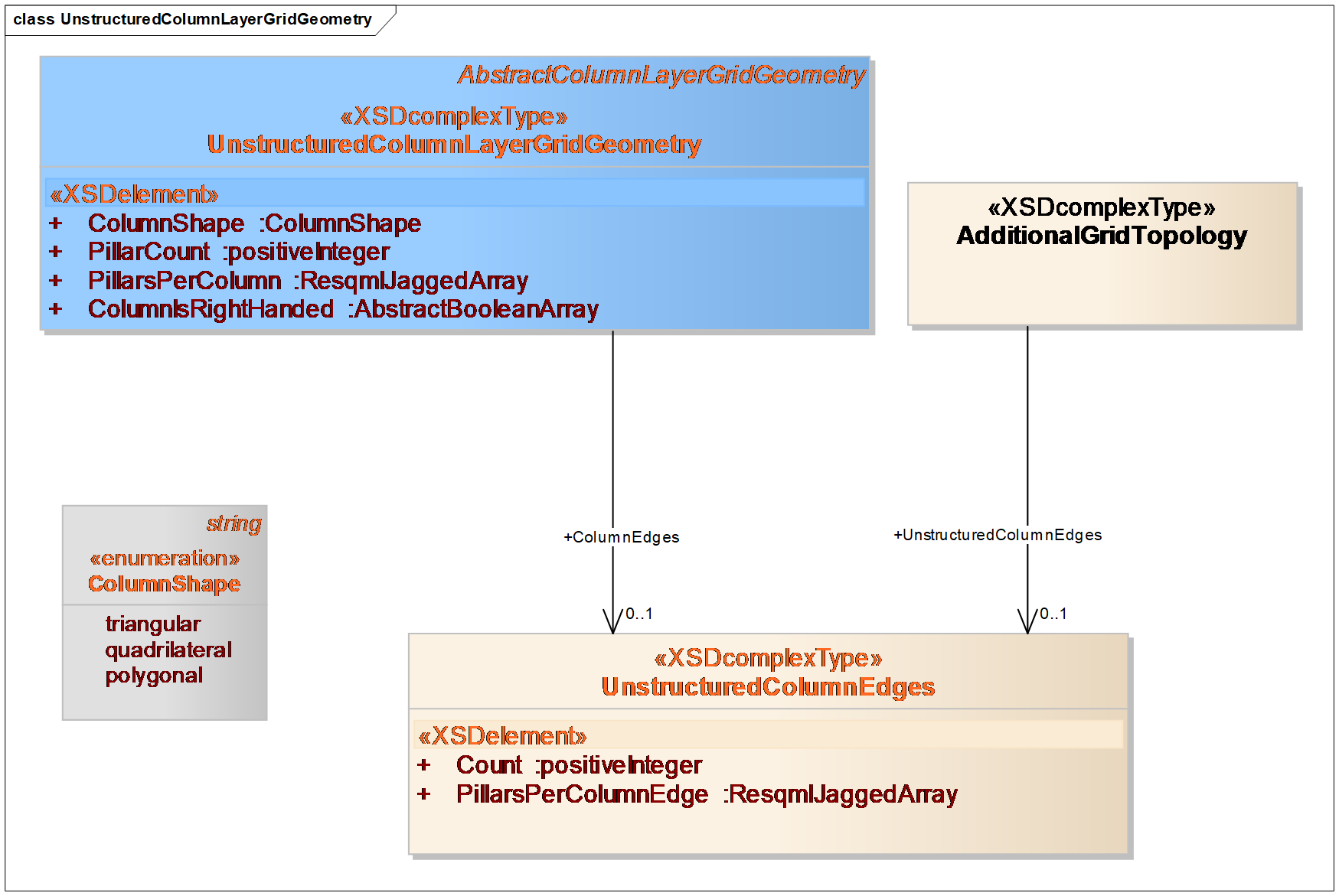11.13.1 Unstructured Column-Layer Grid Geometry
| Topic Version | 1 | Published | 09/11/2015 | |
| For Standard | RESQML v2.0.1 | |||
The unstructured column-layer grid geometry is an extension of the column-layer grid geometry used to describe the geometry of unstructured column-layer grids. As with the column-layer cell geometry, it provides the topological support for nodes on coordinate lines.
Unlike the IJK grid geometry, the unstructured column-layer grid geometry must include explicit topological relationships between the columns of a grid, and geometric grid parity information, as shown Figure 11.13.1-1 .

Specifically, this information is required: the number of pillars, the specification of which pillars are used to delineate which columns, and the parity of each column of the model. In contrast, for IJK grids, much of this information is known implicitly from the IJ indexing, or is uniform on the grid.
As with the column-layer cell geometry, if faces are to be indexed, then column edges must be defined. Neither faces nor column edges are required as part of the description of the grid geometry. However, this optional definition is retained as part of the additional grid topology. In addition, the description includes information on the column shapes for the grid. The shapes are defined topologically, i.e., by the number of pillars used to define each column.
The unstructured column-layer grid geometry supports the unstructured column-layer and the truncated unstructured column-layer grid representations. It also is used in the general purpose grid as a patch.